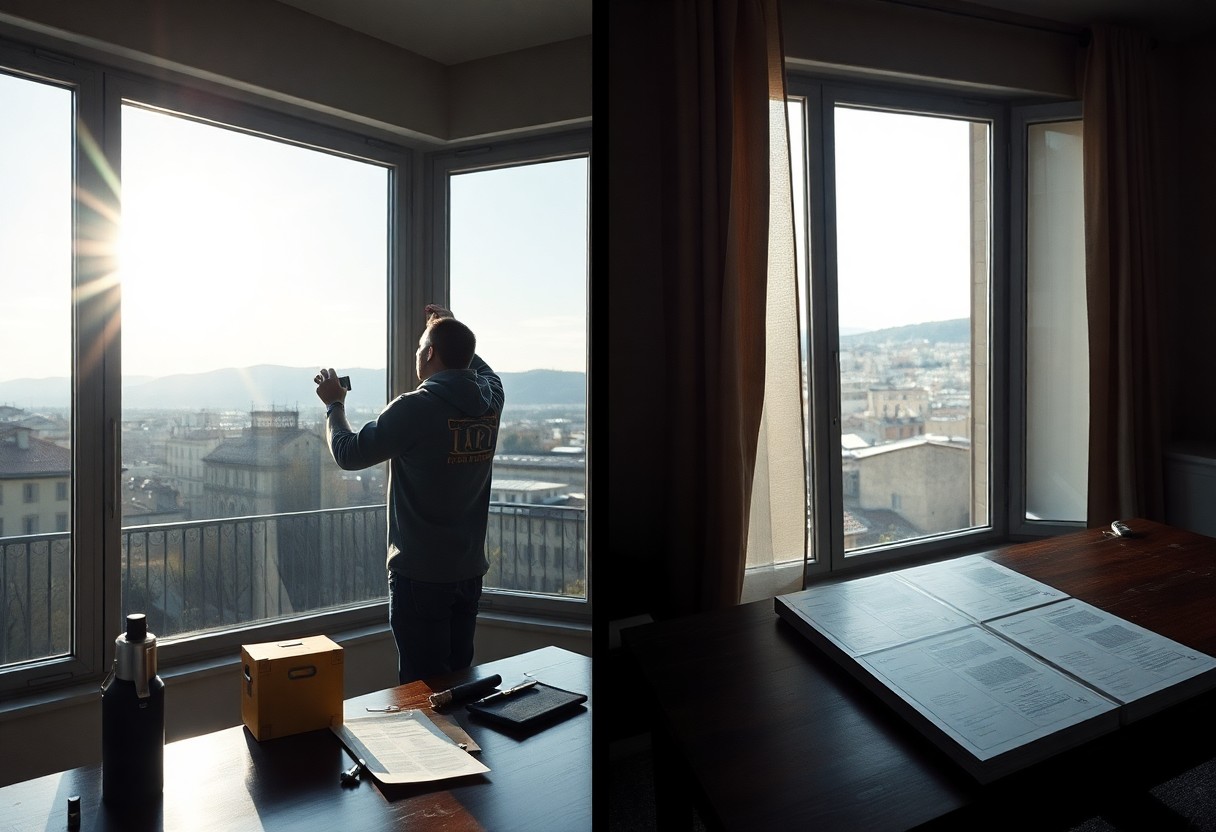Just consider how window tinting can transform your living space in Florence, providing enhanced comfort, increased privacy, and remarkable energy efficiency. By investing in quality window films, you can effectively block harmful UV rays, reduce glare, and maintain cooler indoor temperatures, ultimately leading to lower energy bills. This simple upgrade not only elevates your home’s aesthetics but also safeguards your furniture and belongings from sun damage. Explore the long-term benefits of window tinting and discover how it can improve your everyday life.
Benefits of Window Tinting
Investing in window tinting offers a myriad of benefits that enhance your living space while saving you money in the long run. From improved comfort and privacy to increased energy efficiency, each advantage contributes to a more pleasant and sustainable home environment. Understanding these benefits can help you make an informed decision about your investment.
Enhanced Comfort
Window tinting significantly reduces heat and glare from the sun, creating a more comfortable indoor atmosphere. By regulating temperature fluctuations, you’ll enjoy a stable climate year-round, eliminating the inconvenience of overly bright sunlit spots and keeping your living spaces cozy and enjoyable.
Improved Privacy
With window tinting, you can experience enhanced privacy without sacrificing natural light. Tinted windows obscure the view from outside while still allowing you to enjoy the beautiful scenery around your home. This added layer of discretion helps you feel more secure in your space, making it a peaceful retreat.
Choosing the right window film can dramatically elevate your home’s privacy levels. High-performance tints allow you to see out clearly during the day while obstructing outsiders’ views, creating a protective barrier. You can confidently enjoy your home and engage in everyday activities without the worry of prying eyes.
UV Protection
Window tinting plays a vital role in protecting your interiors from harmful UV rays. These rays can lead to skin damage and also cause fading and deterioration of furniture, carpets, and artwork. By blocking up to 99% of UV radiation, tinted windows significantly enhance your home’s longevity and safety.
Tinted windows provide an excellent defense against UV exposure, leading to a healthier indoor environment. Regular exposure to UV rays can cause skin issues, and many indoor items degrade over time due to sun exposure. With window tinting, you not only protect your health but also preserve the aesthetics and value of your belongings, ensuring they look their best for years to come.
Energy Efficiency and Cost Savings
Window tinting significantly enhances your home’s energy efficiency, leading to substantial cost savings over time. By minimizing solar heat gain and reducing glare, tinted windows help maintain a more consistent indoor temperature, which can lower your reliance on heating and cooling systems, ultimately translating to lower energy bills and a more comfortable living environment.
Reduced Energy Bills
Your energy bills can take a noticeable dip with window tinting. By blocking up to 99% of harmful UV rays, tinted windows decrease the heat entering your home, allowing your HVAC system to work less. This means you can enjoy lower monthly costs so that your investment in window tinting pays off more quickly than expected.
Increased HVAC Efficiency
Optimizing your HVAC system’s efficiency is a direct benefit of window tinting. When your windows are treated with high-quality film, the internal temperature becomes more stable, reducing the strain on your heating and cooling equipment. This leads to a longer lifespan for your HVAC unit and fewer repairs, as it doesn’t have to work as hard to maintain your desired comfort level.
Types of Window Tinting
Understanding the different types of window tinting can help you choose the right option for your needs. Here’s a brief overview:
- Dyed Window Tint
- Metalized Window Tint
- Ceramic Window Tint
- Hybrid Window Tint
- Reflective Window Tint
The following table summarizes the key characteristics of each type.
| Type | Features |
|---|---|
| Dyed Window Tint | Affordable, reduces glare, and offers privacy. |
| Metalized Window Tint | Enhances energy efficiency, strong durability, reflects heat. |
| Ceramic Window Tint | Exceptional UV protection, non-reflective, blocks heat without darkening. |
| Hybrid Window Tint | Combines dyed and metalized options for balanced benefits. |
| Reflective Window Tint | Great for high visibility reduction and maximum heat reflection. |
Dyed Window Tint
Dyed window tint utilizes a layer of dye to absorb heat and reduce glare. It provides a sleek, factory-installed look while enhancing privacy without being overly dark. Ideal for applications where aesthetics and cost are paramount, it’s a popular choice for residential and commercial buildings.
Metalized Window Tint
Metalized window tint incorporates tiny metallic particles that reflect heat away from your home, enhancing energy efficiency and UV protection. This type of tint is more durable than dyed options, making it an ideal choice for areas with intense sunlight exposure.
Metalized window tint effectively reduces interior temperatures, which can lead to lower energy bills. It reflects visible light and heat, keeping your living space comfortable regardless of external weather conditions. This added durability ensures longevity, protecting against scratches and fading over time.
Ceramic Window Tint
Ceramic window tint is a newer, high-end option made from non-metallic ceramic particles that block heat and UV rays without darkening your windows. It offers excellent clarity while maintaining your view, making it a suitable choice for homes where aesthetics are imperative.
This type of tint provides superior thermal insulation, allowing for greater interior comfort throughout all seasons. Additionally, it minimizes glare and protects your furnishings from fading, ultimately prolonging the life of your decor. Its advanced technology positions ceramic window tint as an investment in quality and long-term performance.
Legal Considerations in Florence
Understanding the legal framework surrounding window tinting in Florence is necessary for compliance and can save you from potential fines. Local ordinances dictate specific regulations regarding the application and Shades allowed on vehicles and residential properties. Knowing these regulations helps ensure that your investment enhances your comfort and privacy without attracting unwarranted scrutiny from law enforcement.
Tinting Regulations
Tinting regulations in Florence involve both vehicle and residential guidelines, governed by state laws and local statutes. Vehicle window tinting is subjected to precise standards regarding the visible light transmission percentage for various windows. Residential tinting, while more lenient, still requires consideration of aesthetic and safety regulations to ensure compliance.
Permitted Tint Levels
Permitted tint levels are specified under the law, dictating the amount of visible light that must be transmitted through your vehicle’s windows. For front windshields, the tint must allow at least 70% of light to pass through, while front side windows should maintain a similar level. Back windows have more flexibility but adherence to local standards is still necessary.
Florence regulations specify that front windshields must allow a minimum of 70% visible light transmission, ensuring driver visibility. Front side windows follow the same guidelines, while rear side and back windows can be tinted darker, accommodating personal preferences. Always check for updates or changes to local laws before proceeding, as compliance directly affects both legality and safety on the road.

Professional Installation vs. DIY
Choosing between professional installation and DIY window tinting can greatly impact the effectiveness and longevity of your investment. While DIY projects may seem cost-effective initially, the benefits of hiring an experienced professional often outweigh the savings. Professionals ensure a precise fit and application, which can enhance both the aesthetics and functionality of your windows.
Advantages of Professional Installation
Opting for professional installation guarantees high-quality results, as experts are trained in techniques that prevent bubbles, creases, and misalignment. They also use top-grade materials tailored to your specific needs, ensuring durability and adherence to local regulations. Additionally, many professionals offer warranties, providing you with peace of mind and protection for your investment.
Risks of DIY Tinting
DIY tinting carries significant risks, ranging from improper application to the use of inferior materials. Mistakes in the installation process can lead to bubbling and peeling, ultimately compromising both aesthetics and performance. Additionally, if you apply the wrong film type, it could violate local regulations, resulting in fines or costs for removal.
Moreover, many DIY kits do not come with the same quality assurance that professional products provide. For instance, cheap materials can degrade more quickly due to UV exposure, leading to increased fading and heat penetration in your home. You might find yourself facing costly repairs and replacements sooner than expected, negating any initial savings. Ineffective application can also result in reduced privacy and energy efficiency, thus diminishing the primary benefits of window tinting altogether. Investing in professional installation not only enhances performance but also safeguards your long-term financial commitment.
Maintenance and Longevity
Regular maintenance can significantly extend the life of your window tint. Proper care ensures that your investment continues to provide comfort, privacy, and energy efficiency. Conducting routine checks for peeling or bubbling and keeping surfaces clean will enhance the tint’s durability while helping it maintain its appearance over time.
Care Tips for Window Tint
Maintaining your window tint involves simple routine practices that will keep it looking new. Use a soft cloth for cleaning, avoiding abrasive materials that could scratch the surface. Don’t use ammonia-based cleaners; opt for gentle, tint-safe alternatives. Limit exposure to harsh direct sunlight during the initial curing phase for optimal results.
- Use a microfiber cloth for cleaning.
- Avoid ammonia-based cleaners.
- Limit exposure to direct sunlight initially.
This ensures your tint remains effective and visually appealing over the long term.
Signs of Wear and Replacement
Identifying signs of wear on your window tint is necessary to maintain its performance. Look out for fading, bubbling, or peeling edges, which indicate that it may need replacement. Addressing these issues promptly prevents further damage and ensures that your windows continue to provide the benefits you expect.
Regular inspections can help you catch these issues early. A minor bubble can develop into a larger problem if left unchecked, compromising the tint’s integrity and your investment. As window tint ages, exposure to UV rays and environmental factors may cause it to lose effectiveness and visual appeal. Replacing your tint every 5-10 years, depending on material and quality, can ensure optimal comfort and energy efficiency in your home.





